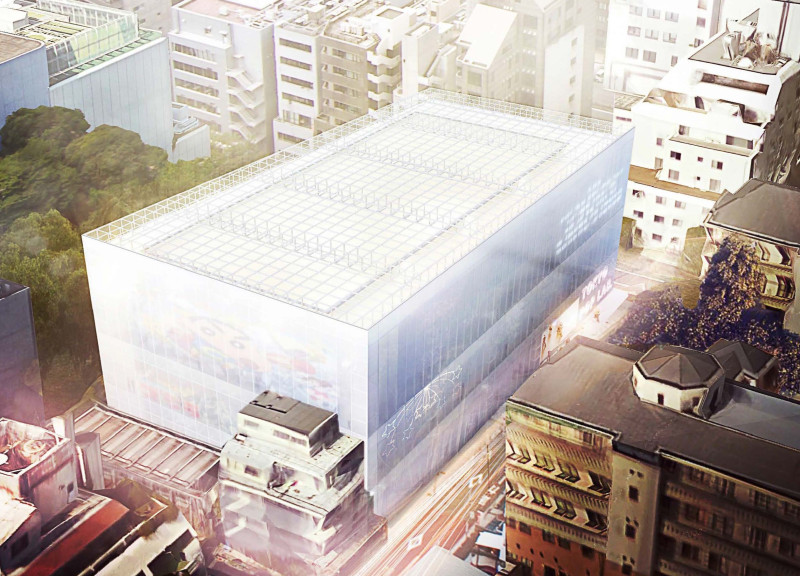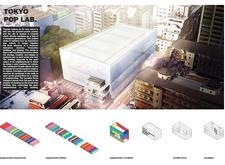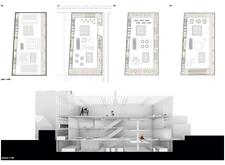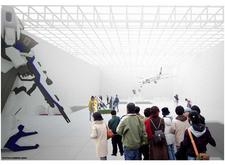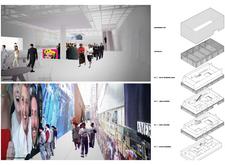5 key facts about this project
The design of the Tokyo Pop Lab reflects a commitment to fostering community interaction through its open and inviting facade. Utilizing glass as the primary material, the facade allows natural light to flood the interior spaces, creating a sense of connection between the lab and its urban environment. This transparency is intentional, as it aims to invite passersby to explore the activities occurring within, highlighting the lab's role as a public space for exploration and learning.
The multifunctional nature of the building is one of its key attributes. The spatial organization feature movable floors, which provide the necessary flexibility to accommodate a variety of activities, from exhibitions to workshops. This adaptability ensures that the space remains relevant to the needs of the community and the evolving landscape of popular culture, offering opportunities for diverse programming that encourages participation and engagement.
In terms of layout, the basement level is dedicated to archival functions, ensuring that the stories and artifacts of popular culture are preserved and made accessible. The first floor acts as a welcoming entry point, designed for community interaction and exhibitions, while the upper levels are designated for larger exhibition spaces, showcasing examples of contemporary art and interactive displays. This careful arrangement promotes a natural flow throughout the building, enhancing the visitor experience by guiding them through a curated interaction with various cultural expressions.
Material choice plays a significant role in the overall design approach of the Tokyo Pop Lab. The use of concrete provides structural integrity while also contributing to the modern aesthetic. Steel elements are utilized not only for their strength but also to create an elegant visual profile. The thoughtful combination of these materials strengthens the project's commitment to durability and sustainability, allowing it to thrive within its urban context.
Unique design features of the Tokyo Pop Lab include its flexible and responsive spaces, which contrast with the more traditional, static nature of many cultural institutions. This focus on adaptability not only enhances functionality but also encourages a creative dialogue among visitors, artists, and the surrounding community. The architecture is rooted in a vision that seeks to engage users actively, ensuring that the building is not merely a backdrop for art but part of the artistic experience itself.
Overall, the Tokyo Pop Lab stands as an exploration of how architecture can embody the essence of popular culture while promoting an inclusive approach to community engagement. The design encourages visitors to immerse themselves in an environment where artistic ideas are exchanged and cultivated. To fully appreciate the intricacies of this project, including its architectural plans and design elements, readers are encouraged to delve deeper into the presentation of the Tokyo Pop Lab, which offers comprehensive insights into its architectural concepts and ideas.


